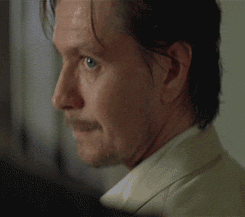Story:
- The series has seen a change in storytelling, from minimalism (Super Metroid) to extended monologues (Metroid Fusion). Other M obviously continues this trend by incorporating lengthy cutscenes. Some concerns have been expressed about whether these CGI movies would hurt the experience. Thankfully, although the total running is apparently around 2 hours, I would say a good chunk is found in the introduction of the game, and that the rest is quite evenly distributed over the course of the game. So it actually does not mess too much with the flow of the game. And it's not all consistent "teenage angst" either: quite a lot of scenes deal with setting the mood (i.e. as a precursor for events to come, much like Super Metroid did; think of the body you saw before you battled Kraid), and are effective in that sense. There's no real need to worry about being oversaturated with teenage drama. But honestly, even if those scenes are annoying, ultimately, the gameplay is what matters. An unparalleled sense of accomplishment when exploring the surroundings is what made Super Metroid great (and not its perceived lack of story exposition!);
- Much has been said about sexism already, but I honestly do not see it. It *is* strange when Samus would exhibit behavior that resembles a teen, rather than an experienced bounty hunter. But clearly, Sakamoto's intention was add an extra dimension to Samus, who up until Fusion could be characterized as a fearless bounty hunter. We're talking about a guy who made the decision to feature a strong female protagonist in 1986. Is sexism really appropriate here? It is more likely that Sakamoto's writing skills are poor, just like well, virtually all scenario developers in the gaming world. As some other posters said, Japanese have a different sense of drama as well;
- There are a lot of complaints on the voice acting in the game. But they actually do a decent job here, given the lines they've had to put out. A voice actor cannot do any good if the dialogue is cheesy to begin with. The voice actor for Adam Malkovich has some of the better lines (or perhaps more accurately: not as bad), which would explain why he comes off as having one of the better voices.
- The dialogue at times is rather corny at times, but it actually improves as the game goes on. Or maybe, I've just gotten used to it.
Visuals:
- The visuals are a mixed bag. Biosphere does not really impress with its flora and fauna, but some bits of pyrosphere are amazing;
- Textures are very simple sometimes;
- Generally a smooth frame rate, although slowdown is found in certain bits, particularly when using using the speed booster (oh, the irony).
Music:
- Music is pretty much non-existant. Although I won't be listening to its OST anytime soon, the ambience as set by the soundtrack enhances the experience tremendously.
Controls:
- Given the way the camera works, the d-pad controls never really get in the way;
- Although you get used to it, switching from a sideways grip to a remote grip for a first person mode is far from ideal. I still think is clumsy, and it is one of the reasons I would have rather seen the nunchuk.
- The auto-aim is great. Metroid has never been too big on shooting (in the sense that a lot of skill is needed), and this aspect has been dealt with in a satisfying manner. Having to aim manually would slow the action down, and if the goal was to recreate a NES metroid experience, then keeping the game speed intact is a crucial aspect;
Difficulty:
- So-called navigation rooms, where Samus gets healed and can save her game, are found frequently in maps. You can also usually continue from the spot where you died. Because of this, the game never becomes frustrating. The difficulty is pretty average. Some of the boss battles can be challenging, which can probably attributed to Team Ninja's influence;
Metroid-specific things:
- There's no question that it is most similar to Metroid Fusion. Your next objective is always specified by a marker on the map, so you always know what to do the next. The game is about as linear as it can get;
- Because it's similar to Fusion, you never really have moment when you think "hey, that's a clever map design";
- Sequence breaking is virtually impossible, because a) wall jumping, done by a simplified control scheme, is similar to Fusion's wall jumping, rather than Super Metroid, where you can basically wall jump on just one wall b) the authorization of weapons means you cannot get certain abilities earlier that are essential to breaking the sequence c) most importantly, the level design does not really lend itself for breaking
- I am glad the Speedbooster is back. However, it seems there are less puzzles involving the Shinespark;
- Not sure if I'm doing something wrong, but some enemies can only be hurt by the melee moves, rather than being finished by it. In some spots I could repeatedly do a melee move on an enemy (that is, grab an enemy, do the closeup move, release, and then immediately grab again), without actually killing it. What's the deal with that?;
The game starts off slow, but I enjoyed the game more and more as it progressed. It is not the best Metroid game, but it's still a good game. Certainly not a 2/5 (which *is* a ridiculous score, particularly considering the fact that games are scored highly on average, especially when compared to films). Even it's a low-tier Metroid, you need to consider the fact that console Metroids do get made that often. It's a different experience, but just enjoy it for what it is and not let your expectations run wild.



